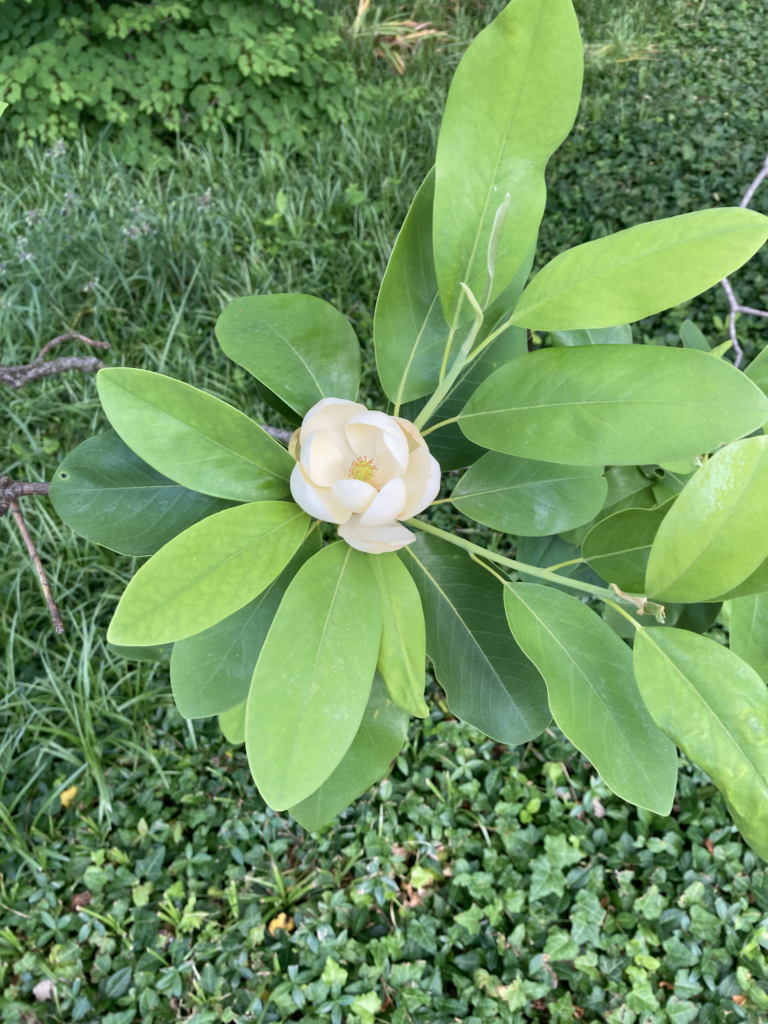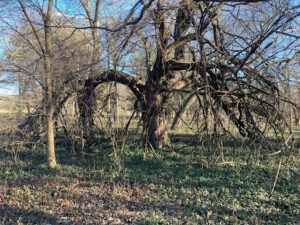As spring nears its end in St. Louis, only a handful of flowers remain, fizzling out like the final bittersweet bursts of a fireworks display. The heavy hitters, the dogwoods, redbuds, flowering cherries, have long since finished and many of us are resigned to the green monotony and heat of summer. So we stroll through the parks and gardens perhaps a little less often, maybe later in the evening to avoid the harsh sun. Our expectations are low, our skin glistening with sweat and bug spray. And then, suddenly, we are accosted by a sweet, lemony scent. We stop, scan our surroundings, and see them, almost concealed by the glossy green leaves – the white flowers of the sweetbay magnolia.
Like our other late-flowering southern magnolia, the sweetbay is not a true native, its range terminating in western Tennessee (although in the east it grows as far north as New York, meaning it is well adapted to cold winters). Evergreen in the deep south, here it is “tardily deciduous” or sometimes “semi-evergreen”, depending on the severity of the winter. The glossy leaves are 3-5” long with a light green top and silvery white bottom, somewhat matching the smooth and silvery grey bark. The flowers are smaller than southern magnolias, sometimes 6” across when fully open but often more like 2-3” – not quite “insignificant” but not nearly as gripping as the other magnolias.
In the south, this can be a big tree, up to 100 feet, but in St. Louis a 30’ sweetbay would be monstrous. It’s a great option to plant under power lines for this reason, and can be grown as either a multi-trunk tree or large shrub. It tolerates full sun or partial shade, but it’s greatest foe in our area is likely to be heavy wind exposure. Using it as an understory tree or close to a building where it will be both warm and sheltered will make it, and you, quite happy. Planting it next to patios, benches, or someplace people tend to linger is also advisable, so its scent may be appreciated to the fullest.
The flowers, untroubled by frost due to their late emergence, can last for multiple weeks, making it a most rewarding plant to grow. So while it lacks fall color, casts little shade and provides only moderate winter interest, it just might be ‘best in show’ for late-flowering trees. Even two weeks of sweetbay’s scent is enough to make it worth planting, and its moderate size means it can fit into nearly any landscape. Unfortunately scratch-and-sniff technology has not been developed for electronic files, so you’d better go out and find one soon to enjoy the fragrance while it lasts.




